- Researchers from The Wilderness Project (TWP) are documenting fish diversity along Zambia’s Kafue River to build a DNA reference library.
- The TWP scientists are collecting fin clippings and environmental DNA to help identify species, including some potentially new to science, without needing to catch them in the future.
- The river, a vital source of food and income for local communities, suffered from major pollution in February when a mine waste dam failed upstream.
- Protected stretches of the river within Kafue National Park offer crucial refuge for fish and other aquatic life, enabling recolonization after environmental shocks like toxic spills.
KAFUE NATIONAL PARK, Zambia – Biologist Mike Ross, balanced in a canoe beneath a star-filled sky in central Zambia, slaps the water with a net attached to a wooden pole and draws it toward him. In the net are several small silver fish.
At dawn the next morning, as three snowy white cattle egrets (Bubulcus ibis) glide through the mist hanging low over the Kafue River, Ross and fellow scientists Lauren Searle and Katongo Kampamba identify the catch: among them, a banded tilapia (Tilapia sparrmanii), an orangefin minnow (Enteromius eutaenia) and a silver robber (Micralestes acutidens). All three are native to the Kafue — Zambia’s longest river — and documenting them contributes to a growing database of the river’s biodiversity, now under increasing threat.
In February, a dam holding acidic mine waste near Kitwe, hundreds of kilometers upstream from the where the trio of scientists now work near Kafue National Park, failed. It released more than 50 million liters (13.2 million gallons) of acidic, heavy metal-laden sludge into a Kafue tributary.
As the toxic plume moved downstream, it left at least one hippo dead, as well as numerous crocodiles, fish and monitor lizards. Zambia Air Force helicopters dumped lime into the river near the spill and upstream of the park in an effort to neutralize the acid.
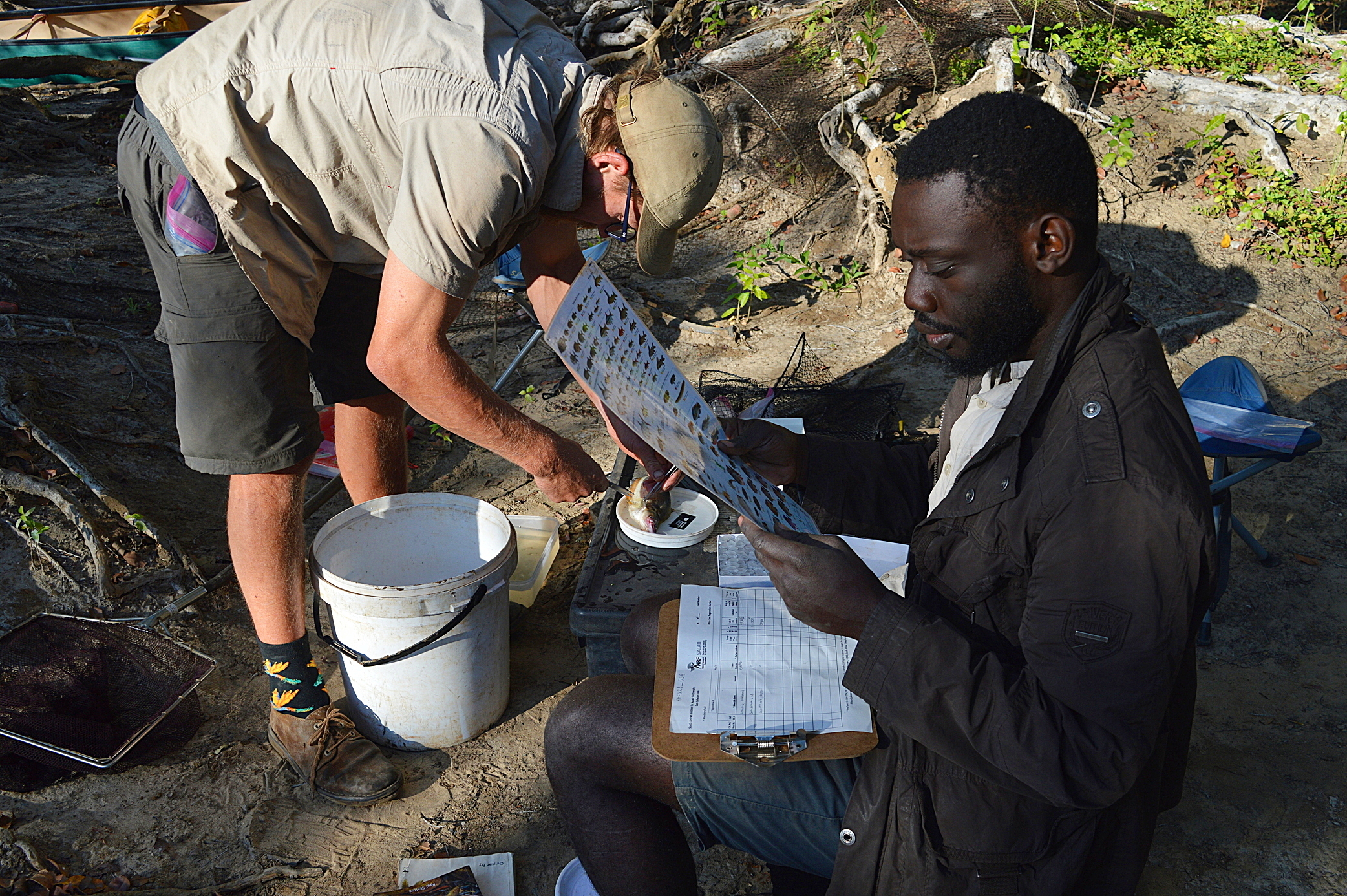
Documenting the fish diversity of the Kafue, along with its wildlife and human activities — from maize fields and mango orchards to fishing camps, safari lodges and water pumps extracting water to irrigate commercial crops like sugarcane — is central to the work of the Great Spine of Africa project. This continent-wide initiative by The Wilderness Project (TWP), a nonprofit led by African researchers and explorers, is assessing the health of Africa’s major rivers and their basins.
In 2024, Ross and a TWP team traveled the entire 1,600-kilometer (990-mile) length of the Kafue, from its source near the town of Yowela, in Zambia’s North-Western province to its confluence with the Zambezi River, below Lake Kariba. They identified more than 70 fish species.
Seated at a folding table at the campsite on the banks of the Kafue, inside the 13,000 km2 (5,000 mi2) Lunga-Luswishi Game Management Area adjoining the national park, the three scientists carefully clip small sections off the fins of the fish caught the night before. The fin clippings go into ethanol-filled tubes, and the euthanized fish — preserved in formalin — are sealed in plastic bags to be sent to the American Museum of Natural History for DNA sequencing.
One set of fin clippings will also go to the Wild Bird Trust, TWP’s sister organization based in Maun, Botswana. Together, these samples will help build a reference library of African freshwater fish.
Eventually, the team hopes to rely on environmental DNA (eDNA) collected by filtering river water. Animals shed DNA as they pass through water, and with a robust reference library, researchers will ultimately be able to identify fish species without trapping them.
“We would have to build up that library first, so that’s where our fish sampling is really handy,” Searle says.
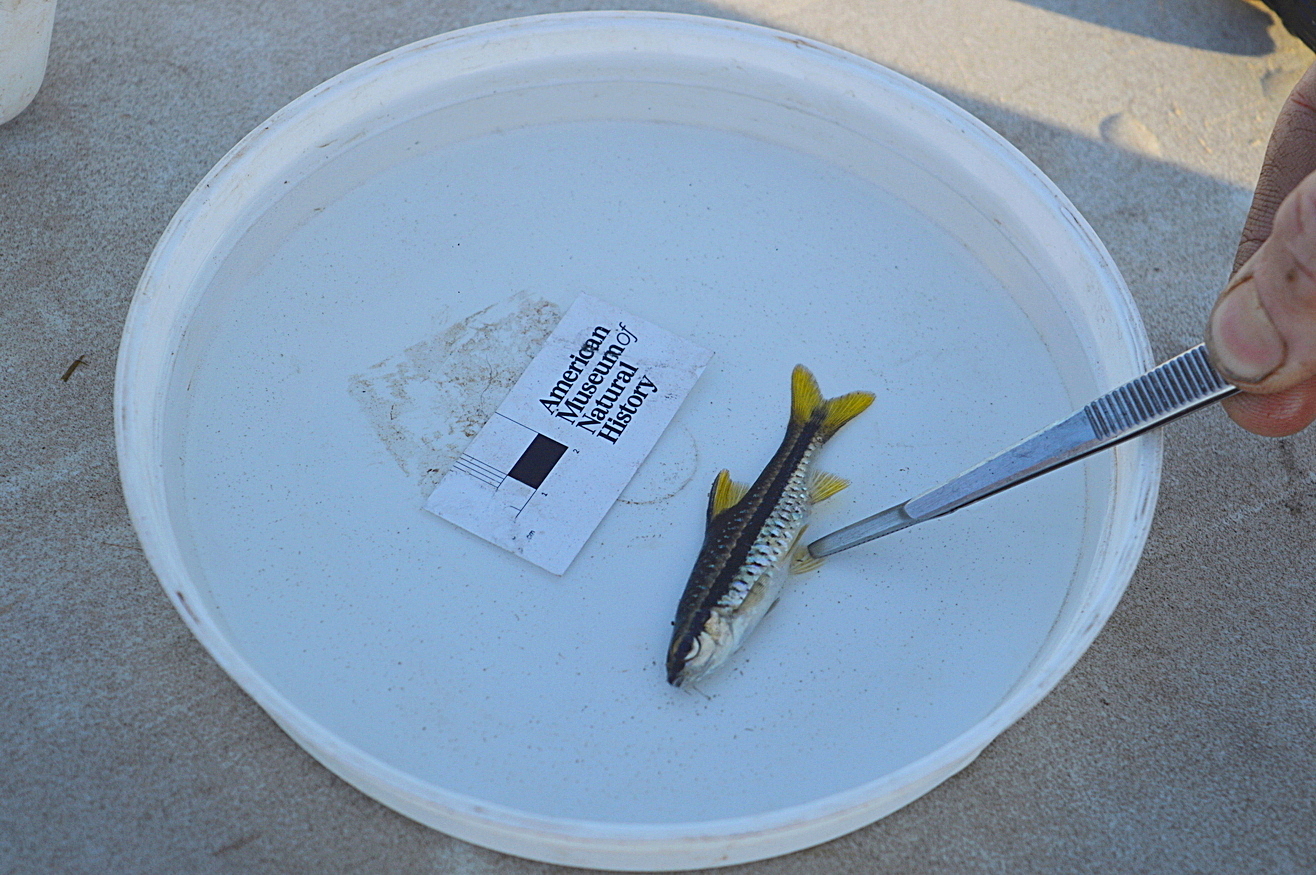
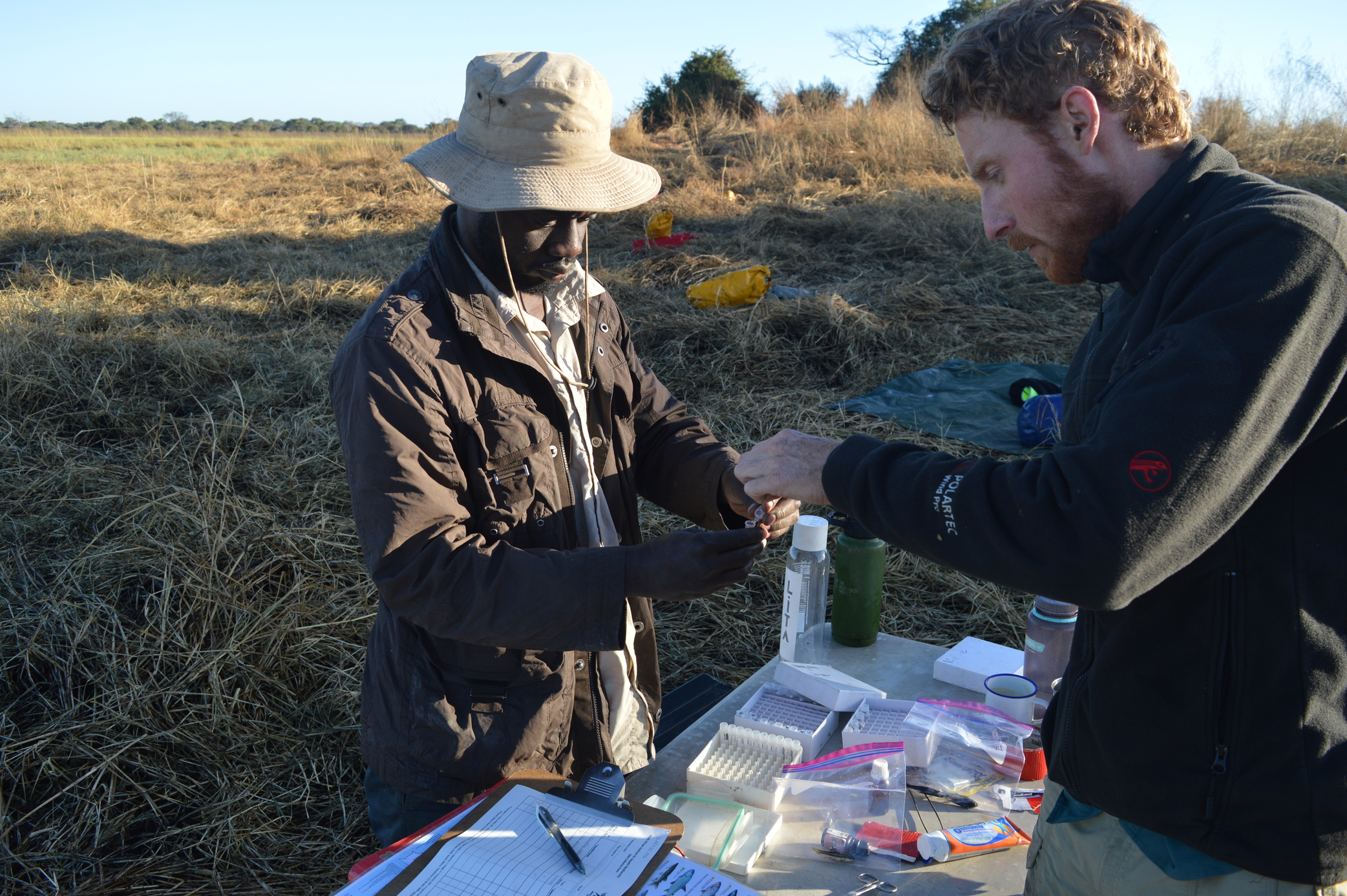
TWP’s work in the Kafue and beyond is already revealing surprising finds. Two years ago, an expedition by the National Geographic Okavango Wilderness Project — a TWP partner — captured several ghost stone bashers (Paramormyrops jacksoni) along Angola’s Cuando River. These rare fish navigate using electrical pulses and were previously known only from a single specimen collected in 1967.
In May, Ross’s team caught an undescribed species in the upper reaches of the Lunga River, a major Kafue tributary. Having a specimen of the fish will help experts formally describe it, expanding our understanding of the region’s rich aquatic life.
Globally, as on the Kafue, river health is increasingly at risk — from damming, excessive water abstraction, overfishing and pollution — and fish are key indicators of ecosystem condition. In the Kafue, the dead fish following the February acid spill starkly illustrated a system in distress. But in healthy stretches of the river, fish help maintain balance: They feed on algae, control insect larvae and provide food for crocodiles, fish eagles, herons and local communities.
The section of river that flows for around 300 km (186 mi) through the national park and its adjacent game management areas provides a vital refuge for Kafue’s different species of fish, allowing them to build resilience against external shocks, such as February’s mine spill.
“Having those sanctuary areas within the park or adjacent to the park is quite important to keep the fish populations healthy,” says Sven Vrdoljak, an ecologist with African Parks, the NGO that co-manages the national park with Zambia’s Department of National Parks and Wildlife.
Annual flood pulses allow fish to disperse into once-dry grasslands where grazing animals have left nutrient-rich droppings. These include the Busanga plains in the north of the park, and the Nanzhila plains in the south.
“They will breed, they will spawn and then, as the waters recede again, the fish move back into the main channels,” he says.
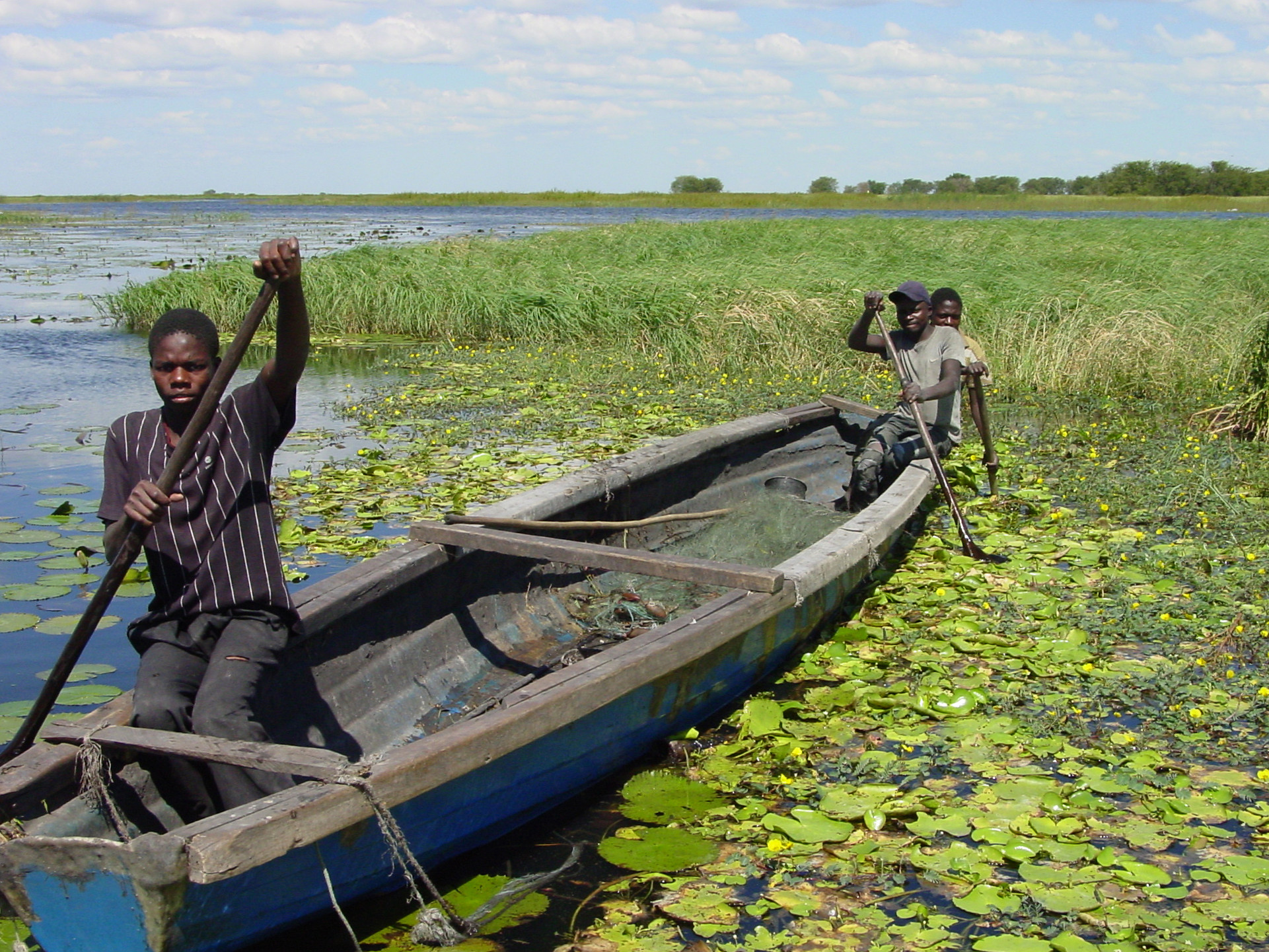
The mouths of rivers that lead into Lake Itezhi-Tezhi — a vast hydropower reservoir that lies mostly within the park’s southern boundary – are also notable fish breeding areas, with local communities reaping the benefits. Each year, more than 1,600 fishers operate in park waters under permits issued by park authorities. According to official estimates, fishing these rivers as well as smaller fisheries along protected parts of the Kafue and traditional fisheries in Busanga and Nanzhila, harvest some 5,000 tons of fish worth 78 million kwacha ($3 million) annually. These fish are primarily bream from the diverse Cichlidae family. The catch is sold to traders in Itezhi Tezhi town: Fresh fish is transported to Lusaka, about 300 km away, while dried and salted fish finds its way to local and regional markets — possibly reaching as far as the Democratic Republic of Congo.
But even well-enforced management efforts — including seasonal fishing bans and the use of multi-filament gill nets that are more selective and therefore reduce catch volumes — cannot shield these fisheries from threats already in the water.
Invasive Australian red-clawed crayfish (Cherax quadricarinatus), accidentally released nearly 25 years ago, have now spread through much of the river system. And Nile tilapia (Oreochromis niloticus), introduced through aquaculture and reported in the wild as far back as 1992, are displacing native species and weakening their genetic integrity by breeding with them. These include the three-spot tilapia (Oreochromis andersonii), whose pure-bred populations are now rare.
“With closely related species they can hybridize, so you start to lose the indigenous species through that ‘genetic pollution,’” Vrdoljak says.
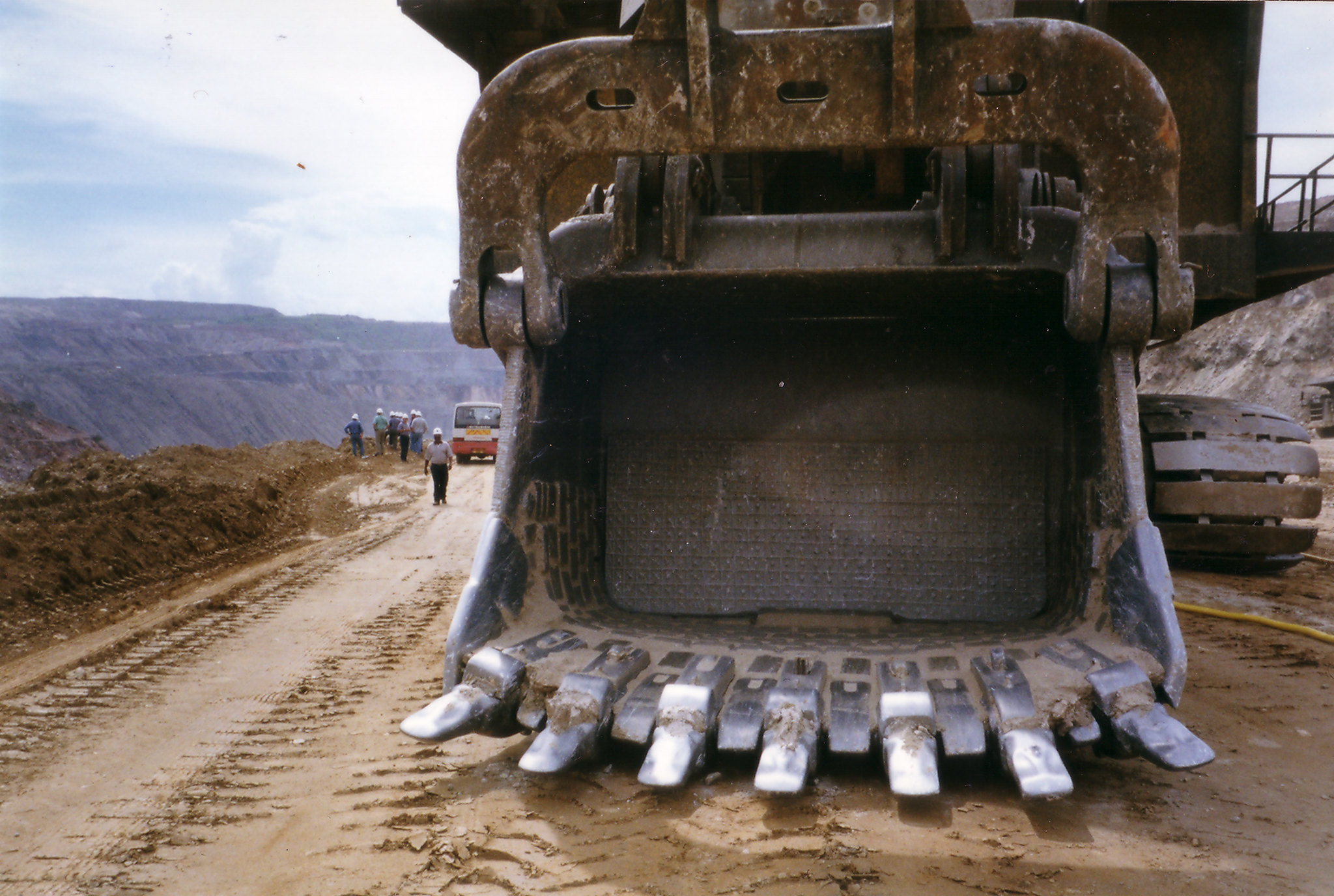
Meanwhile, the chemical pollution comes at immense cost to local communities, experts say.
The upper Kafue drains Zambia’s industrial heartland — the Copperbelt — where mining, heavy industry and densely populated urban areas all converge. Here, the river is under intense pressure, not just from large-scale disasters like the February acid spill, but from relentless, everyday pollution.
Siltation from mine tailings, runoff from unregulated agriculture and unchecked water abstraction all degrade water quality and habitat, says Carl Huchzermeyer, an independent fisheries scientist based in Zambia.
“The Copperbelt has some of the highest urban and peri-urban population densities in the country,” he tells Mongabay. “It is reasonable to expect that this part of the Kafue catchment is under heavy pressure.”
Yet, fish from even the smallest tributaries and wetlands in this region have long provided an affordable source of protein for local households. Studies have shown that even small fish, caught in local streams using simple traps — including ingenious minnow traps fashioned from discarded wine bottles that were documented during TWP’s 2024 survey — are important for nursing mothers, pregnant women and children. Eaten whole, these fish provide nutrients and minerals not otherwise available in carbohydrate-heavy diets.
Despite this, little is known about how much of the fish consumed in the Copperbelt are contaminated with heavy metals or pesticide residues, and pollution and toxicology studies are scarce.
“The field does not get sufficient institutional and funding support,” Huchzermeyer says, though he commends the work of TWP, not least because its researchers completed a baseline biodiversity survey of the entire length of the Kafue in 2024, capturing vital data ahead of the February acid spill.
“My hope is that the disaster will have galvanized public and political will for improving the monitoring and regulation of pollution impacts on a river that millions of people depend on.”
Mongabay joined an expedition of The Wilderness Project traveling the length of the Kafue River, part of TWP’s wider project to gather data in Africa’s major river basins.
Banner image: Kyle Gordon, of TWP, draws in a fishnet left in the river overnight to sample this part of the Kafue’s fish diversity. Image courtesy of Kyle Gordon.
As southern African freshwater fish & fisheries struggle, collaboration is key (commentary)
New study pushes for protection of one of Africa’s ‘least understood treasures’
Feedback: Use this form to send a message to the author of this post. If you want to post a public comment, you can do that at the bottom of the page.
